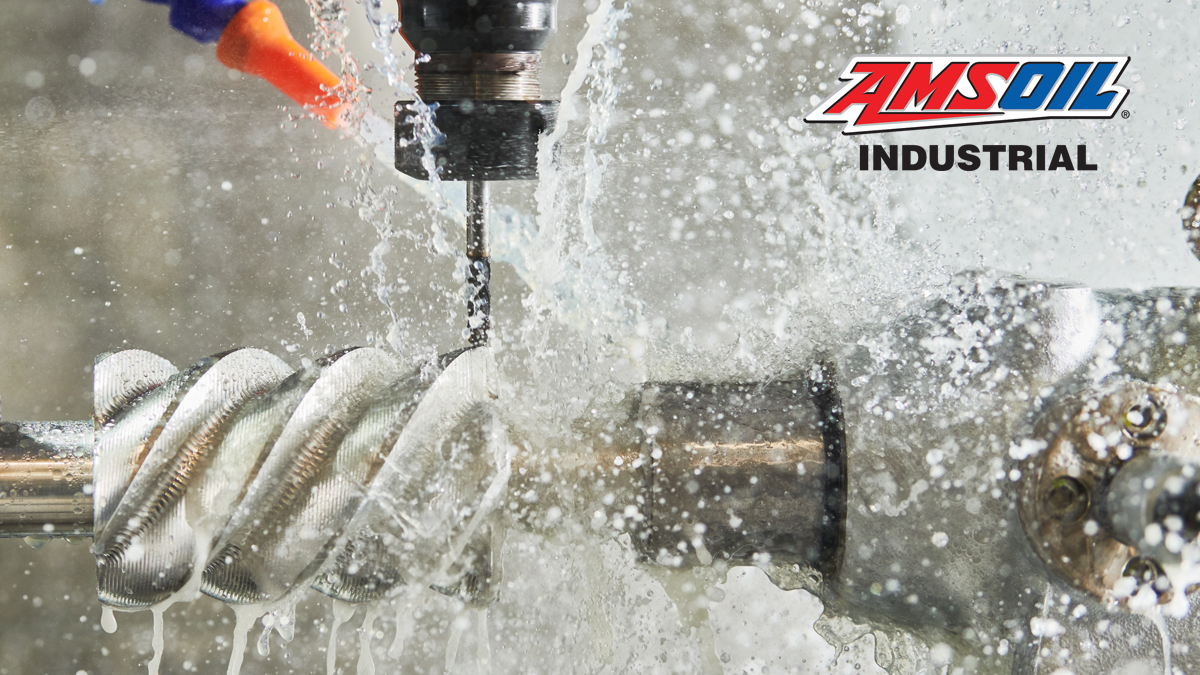What Causes Metalworking Fluid Failure?
Metalworking fluids (MWFs) are an important component in machining operations, especially in terms of lubrication, cooling and chip removal. Although MWFs contain additives that can help combat problems such as corrosion, foam and rancidity, they are not infallible.
Discover what factors may be contributing to the premature breakdown of your MWFs and solutions you can try with our free Water-Dilutable Metalworking Fluid Troubleshooting Guide.
DOWNLOAD YOUR FREE TROUBLESHOOTING GUIDE NOW
3 Types of Metalworking Fluids
Water-dilutable MWFs come in three main types:
1) Soluble – These contain a high percentage of oil (typically 50%+ oil) and form a milky emulsion when mixed with water. They are versatile and suitable for both ferrous and non-ferrous materials.
2) Semi-Synthetic – Containing lower oil content (typically 5-40% oil), these fluids offer better cooling and wetting properties, making them suitable for moderate to heavy-duty applications.
3) Synthetic – These contain almost no mineral oil (typically 0-5% oil) and provide excellent cooling and lubrication for a wide range of applications.
It’s good to consider the type of MWFs you’re using because, as you’ll discover, some are better at combating issues like corrosion, excessive foam, coolant instability, residues and rancidity. These problems can negatively affect not only the performance of your machinery, but also the quality of your workpieces. Understanding the properties and limitations of different MWFs can help you choose the right one for your specific applications and maintain a more efficient and reliable operation.
Metalworking Fluid Failure: 8 Causes and Solutions
To find the right solution, you must figure out what’s causing the problem first. With so many potential factors, it might take a bit of troubleshooting. Our free, comprehensive troubleshooting guide offers invaluable insights and practical advice to help you get started.
DOWNLOAD YOUR FREE TROUBLESHOOTING GUIDE NOW
1) Corrosion can result from improper fluid mixing, poor water quality, contamination or high temperatures and humidity. To prevent it, use a refractometer to ensure your fluid concentration is correct, use high-quality water, maintain filtration and address contamination sources. Proper ventilation and rust-preventive additives can also help, along with careful part handling and storage techniques.
2) Poor tool life can result from improper coolant mixing, hard water that affects emulsions, foam generation, process changes and contamination. Maintaining proper concentration, using treated water, ensuring effective fluid delivery and minimizing contaminants are key to optimal performance.
3) Foam in fluids can result from various issues, including improper mixing, defoamer depletion, unsuitable fluid for high-speed operations, contamination, water quality, low coolant levels or mechanical problems. Address these by maintaining correct concentrations, replenishing defoamers, using the right fluid, improving water treatment, keeping the sump full and repairing fluid delivery systems.
4) Coolant instability can result from improper mixing, poor water quality, contamination, low concentration or high tramp oil levels. To prevent issues, use the correct coolant concentration, softened or deionized water and remove tramp oil with skimmers or sump suckers.
5) Residues can form due to improper mixing, poor water quality, inadequate flushing and contamination. Use correct concentrations, treated water, daily flushing and minimize contaminants to reduce residue buildup.
6) Poor surface finish can result from improper mixing, coolant instability or process changes. Ensure correct concentrations, maintain fluid stability and check for changes in coolant, tooling or materials.
7) Ensure operator safety and comfort by maintaining proper fluid concentration, removing tramp oil, improving filtration and promoting PPE use and providing skin-friendly soaps to prevent odors, irritation and dermatitis.
8) To prevent rancidity, ensure proper fluid mixing, maintain circulation to avoid stagnation and minimize tramp oil and contamination. Use clean tools and, if needed, apply a tank-side biocide to control microbial growth.
DOWNLOAD YOUR FREE TROUBLESHOOTING GUIDE NOW
AMSOIL Industrial: Solutions You Can Count On
Metalworking fluids require proper maintenance and troubleshooting to perform at their best. By addressing common issues like corrosion, poor tool life, foam, coolant instability, residues, poor surface finish, operator acceptance and rancidity, you can ensure optimal performance and longevity of your metalworking fluids.
Remember, regular monitoring, proper mixing and addressing issues promptly are key to maintaining the efficiency and effectiveness of your metalworking fluids. Take proactive steps today to keep your operations running smoothly and efficiently. For more detailed solutions and personalized advice, contact an AMSOIL Industrial Application Engineer today.
